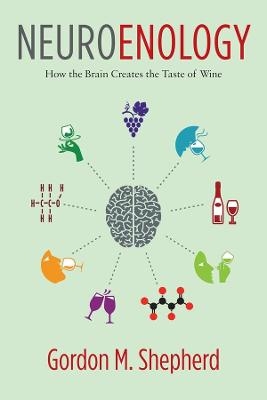
Neuroenology
Columbia University Press (Verlag)
978-0-231-17700-9 (ISBN)
In his new book, Gordon M. Shepherd expands on the startling discovery that the brain creates the taste of wine. This approach to understanding wine's sensory experience draws on findings in neuroscience, biomechanics, human physiology, and traditional enology. Shepherd shows, just as he did in Neurogastronomy: How the Brain Creates Flavor and Why It Matters, that creating the taste of wine engages more of the brain than does any other human behavior. He clearly illustrates the scientific underpinnings of this process, along the way enhancing our enjoyment of wine. Neuroenology is the first book on wine tasting by a neuroscientist. It begins with the movements of wine through the mouth and then consults recent research to explain the function of retronasal smell and its extraordinary power in creating wine taste. Shepherd comprehensively explains how the specific sensory pathways in the cerebral cortex create the memory of wine and how language is used to identify and imprint wine characteristics.
Intended for a broad audience of readers-from amateur wine drinkers to sommeliers, from casual foodies to seasoned chefs-Neuroenology shows how the emotion of pleasure is the final judge of the wine experience. It includes practical tips for a scientifically informed wine tasting and closes with a delightful account of Shepherd's experience tasting classic Bordeaux vintages with French winemaker Jean-Claude Berrouet of the Chateau Petrus and Dominus Estate.
Gordon M. Shepherd is professor of neuroscience at the Yale School of Medicine and former editor in chief of the Journal of Neuroscience. His books include Neurogastronomy: How the Brain Creates Flavor and Why It Matters (Columbia, 2012), Handbook of Brain Microcircuits (2010), and Creating Modern Neuroscience: The Revolutionary 1950s (2009).
Preface Introduction: A New Approach to Wine Tasting Part I. Fluid Dynamics of Wine Tasting 1. Sip and Saliva 2. The Tongue: Moving the Wine 3. Respiration and Wine Aromas 4. The Pathway for Retronasal Airflow 5. Swallow, Aroma Burst, and Finish Part II. How Sensory Systems Create the Taste of Wine 6. Sight: Creating the Color of Wine 7. Orthonasal Smell: Wine Molecules Meet Smell Receptors 8. Orthonasal Smell: Creating a Wine Aroma Image 9. Orthonasal Smell: From Odor Image to Aroma Perception 10. Touch and the Mouthfeel of Wine 11. Taste Modalities and Wine Tasting 12. Creating Taste Perception 13. Retronasal Smell: The Hidden Force in Wine Tasting 14. Retronasal Smell: What Is So Special? 15. Retronasal Smell: Creating the Multisensory Wine Flavor Part III. How Central Brain Systems Create the Pleasure of the Taste of Wine 16. Wine Tasting, Gender, and Aging 17. Memory and Wine Tasting 18. The Language of Wine Tasting 19. Pleasure: The Final Judge in Wine Tasting 20. Practical Applications of Neuroenology to the Pleasure of Wine Tasting Appendix. A Wine-Tasting Tutorial with Jean-Claude Berrouet Bibliography Index
| Erscheinungsdatum | 17.12.2016 |
|---|---|
| Zusatzinfo | 34 figures and diagrams |
| Verlagsort | New York |
| Sprache | englisch |
| Maße | 152 x 229 mm |
| Themenwelt | Sachbuch/Ratgeber ► Essen / Trinken ► Getränke |
| Studium ► 1. Studienabschnitt (Vorklinik) ► Physiologie | |
| Naturwissenschaften ► Biologie ► Zoologie | |
| ISBN-10 | 0-231-17700-3 / 0231177003 |
| ISBN-13 | 978-0-231-17700-9 / 9780231177009 |
| Zustand | Neuware |
| Haben Sie eine Frage zum Produkt? |
aus dem Bereich


